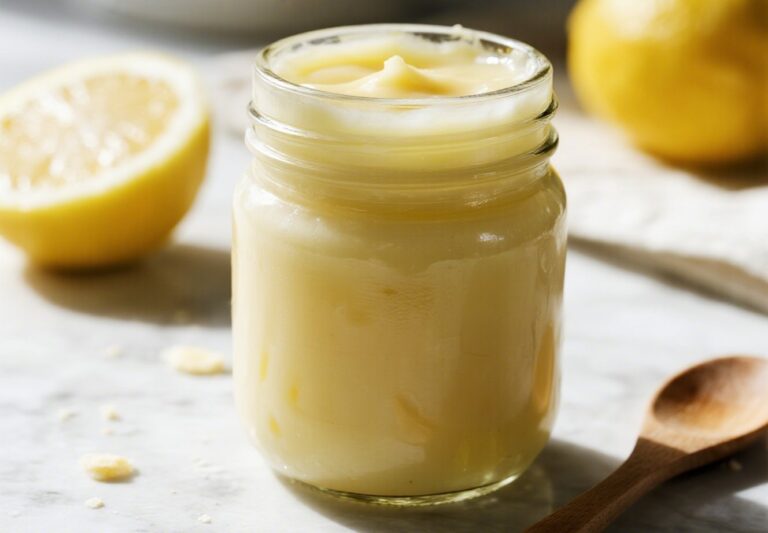The Best Lemon Truffles Recipe You’ll Ever Try (Easy & Zesty)
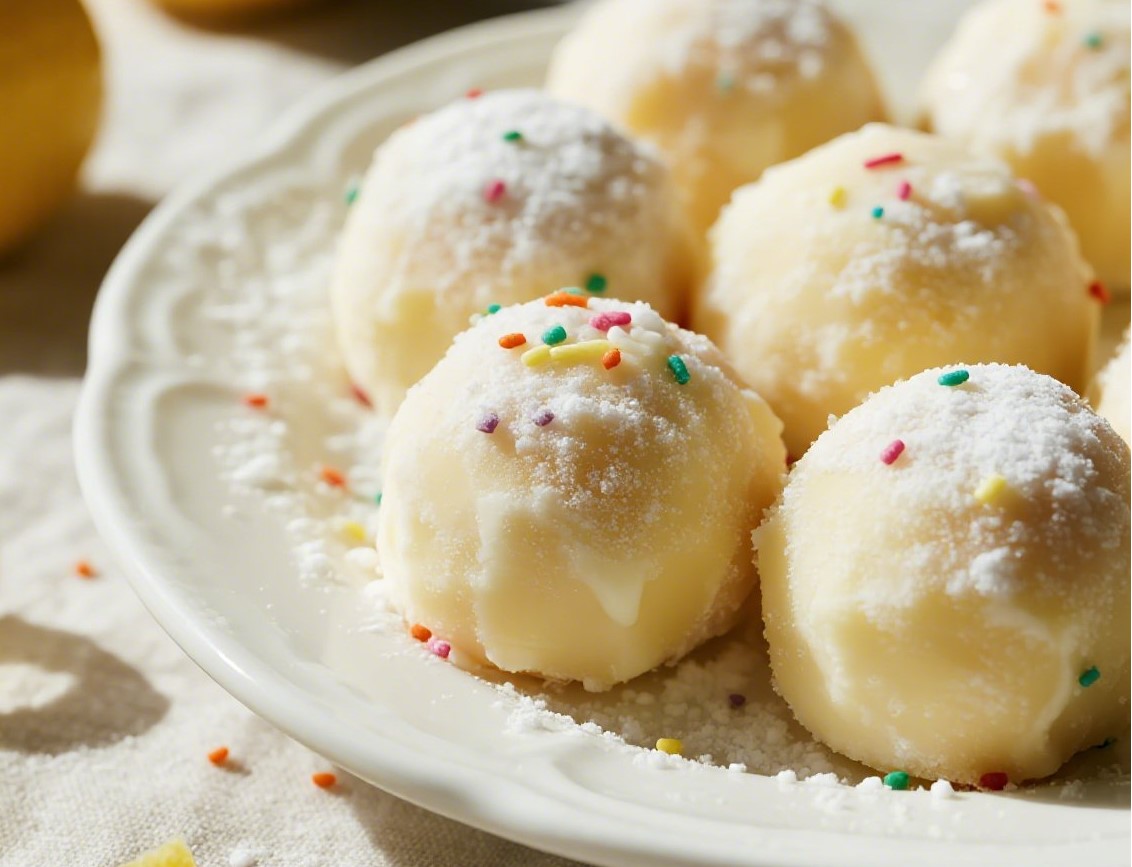
If you’re a lemon lover, you’re about to meet your new obsession—Lemon Truffles. These bright, zesty, creamy bites combine white chocolate and fresh citrus flavor into one irresistible treat. Whether you’re prepping for a summer party, a bridal shower, or just craving something tangy and sweet, lemon truffles are your go-to.
In this article, we’ll dive into everything you need to know to make perfect lemon truffles at home—from picking the right ingredients and tools to mastering the step-by-step process. We’ll also explore smart variations, pro tips, and how to troubleshoot common issues.
Let’s kick things off with understanding what makes lemon truffles such a standout treat.
What Are Lemon Truffles?
What Makes Lemon Truffles Unique?
Lemon truffles are a citrus-forward twist on classic chocolate truffles. Instead of dark or milk chocolate, they’re made with creamy white chocolate, heavy cream, and pure lemon extract to give them a fresh, slightly tart flavor. This combo creates a perfectly smooth ganache that melts in your mouth.
What sets them apart is their versatility. You can roll them in powdered sugar, sanding sugar, or sprinkles, depending on the occasion. They’re also great as gifts, dessert platters, or mini bites at a baby shower or brunch.
History and Popularity of Truffle Desserts
The word truffle originally referred to luxurious mushrooms, but in the culinary sweets world, it means a small chocolate-based treat—traditionally made with ganache and coated in cocoa powder or nuts. Over the years, sweet truffles evolved, branching into flavored truffles like lemon, raspberry, and even matcha.
Lemon truffles rose to popularity as a fresh, bright option perfect for warmer seasons. Their delicate color and zingy flavor make them a favorite for summer gatherings, afternoon teas, or even holiday cookie swaps.
Key Ingredients for Perfect Lemon Truffles
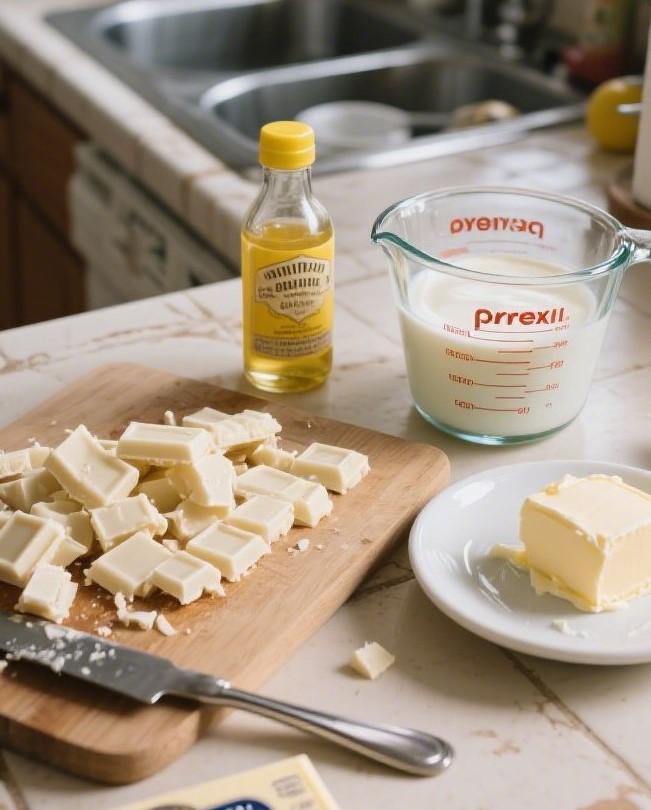
Best Type of White Chocolate to Use
When making lemon truffles, not all white chocolates are created equal. The quality of your chocolate directly affects the texture and flavor of your ganache. For the best results, avoid using white chocolate chips or candy melts. These typically contain stabilizers and added sugars that interfere with melting and consistency.
Instead, choose premium white chocolate bars with a high cocoa butter content—at least 30%. Two top choices that pros and home bakers alike trust are:
| Brand | Cocoa Butter % | Texture | Flavor Notes |
|---|---|---|---|
| Ghirardelli | ~32% | Smooth | Creamy, sweet |
| Lindt | ~34% | Silky | Balanced sweetness |
Using chopped chocolate bars ensures the mixture will melt uniformly and set properly into soft, rollable ganache—exactly what you want in a truffle.
Why Lemon Extract Matters: Quality vs. Imitation
While it might be tempting to swap lemon extract with lemon juice, that’s a common mistake that can ruin the balance of flavors and consistency. Lemon juice is water-based and can separate your ganache due to its acidity and lack of oil content.
Opt for pure lemon extract, made from real lemon oil. It delivers a more concentrated flavor with just a teaspoon and integrates perfectly with cream and chocolate. Avoid imitation lemon extracts—they often taste artificial and can overpower the delicate white chocolate.
Optional Coatings: Powdered Sugar, Sprinkles & Alternatives
The final layer of a truffle isn’t just decorative—it adds flavor, texture, and a personal touch. Here are your best options:
- Powdered sugar – Classic, smooth, and melts on the tongue
- Nonpareil sprinkles – Add crunch and visual appeal
- Sanding sugar – A sparkly upgrade for holiday or party trays
You can also roll truffles in freeze-dried raspberry dust, finely chopped nuts, or crushed graham crackers for an added twist.
Pro Tip: If you want your truffles to look bakery-quality, chill them after rolling and double-coat them for a more defined finish.
Tools and Prep Work Before You Start
Must-Have Tools: Wooden Spoon, Heatproof Bowl, Melon Baller
Before diving into this lemon truffle recipe, having the right tools on hand is crucial. These aren’t fancy gadgets—just smart kitchen essentials that ensure your truffles come out smooth, creamy, and perfectly shaped.
- Wooden Spoon
A wooden spoon is non-negotiable. Metal or plastic spoons can retain heat and distribute it unevenly, which may affect the consistency of your ganache. A wooden spoon provides gentle, steady stirring without disrupting the delicate emulsification of the chocolate and cream. - Heatproof Bowl
Always use a large, heatproof glass or ceramic bowl to melt your chocolate. It should be sturdy enough to withstand high temperatures when the hot cream is poured in. Avoid thin plastic bowls, as they might warp or leach chemicals when exposed to heat. - Melon Baller or Teaspoon
For rolling uniform truffles, a melon baller gives you consistent shapes and sizes. Don’t have one? A standard teaspoon measure works too. Uniform truffles not only look better—they chill and set evenly, too.
Preparing Your Workspace for Clean Rolling
Making truffles can get messy if you’re not prepped. Here’s how to set yourself up for success:
- Line baking sheets with parchment paper or silicone baking mats before starting. This makes transferring and chilling truffles much easier.
- Clean your hands after each truffle. It might sound tedious, but wiping your hands between rolls keeps your ganache from sticking and ensures each ball is smooth and uniform.
- Chill your ganache thoroughly. After initial cooling at room temperature, refrigerate for at least 6 hours or overnight. This gives you a firm but pliable texture that’s easy to shape.
Expert Setup Tip: Place your rolling station near your fridge. This cuts down on time running back and forth and keeps the ganache from warming up too fast.
Step-by-Step: How to Make Lemon Truffles
Melting and Mixing the Ganache
Creating a smooth, creamy lemon truffle ganache starts with patience and quality ingredients. Here’s the exact method used to get that perfect consistency.
- Prep the chocolate and butter
In a large heatproof bowl, add 14 ounces (398g) of chopped white chocolate and place 1 tablespoon (14g) of softened unsalted butter on top. Don’t mix yet—just let them sit while the cream heats. - Heat the cream and extract
In a small saucepan, pour ¾ cup (180mL) of heavy cream. Set over medium heat and whisk gently. Once it just begins to boil, remove it from the heat immediately. Then add 1 teaspoon of lemon extract. Be cautious—it may bubble up due to the oil. - Combine with chocolate
Pour the hot lemon-cream mixture over the white chocolate and butter. Let it sit undisturbed for 1 minute to allow the heat to begin melting the ingredients. - Gently stir the mixture
Using your wooden spoon, stir gently in one direction. Avoid vigorous mixing—that can introduce air bubbles or break the emulsion. The goal is a silky, lump-free ganache.
Cooling, Chilling, and Handling Truffle Mix
After the mixture is completely smooth, follow these cooling and chilling tips to prep for rolling:
- Initial cool down
Cover the bowl with plastic wrap, pressing it directly against the surface of the ganache. Let it sit at room temperature for 1 hour. This helps avoid condensation buildup in the fridge. - Chill overnight
Transfer the bowl to your refrigerator for at least 6 hours, though overnight chilling is ideal. This solidifies the ganache into a soft, scoopable texture that’s still pliable for rolling. - Ready to roll
Before rolling, line 2 baking sheets with parchment or silicone mats. Have your coating bowl (powdered sugar or sprinkles) nearby. Using a melon baller or teaspoon, scoop the ganache, roll it quickly between your palms, then roll in your desired coating.
| Step | Time Estimate | Key Notes |
|---|---|---|
| Heating cream | 3–4 mins | Just until boiling |
| Melting ganache | 5 mins | Stir gently, no whisk |
| Chilling time | 6–12 hrs | Overnight preferred |
Quick Tip: If the ganache starts to melt or stick while rolling, pop the bowl back into the fridge for 15 minutes before continuing.
Rolling and Coating the Truffles
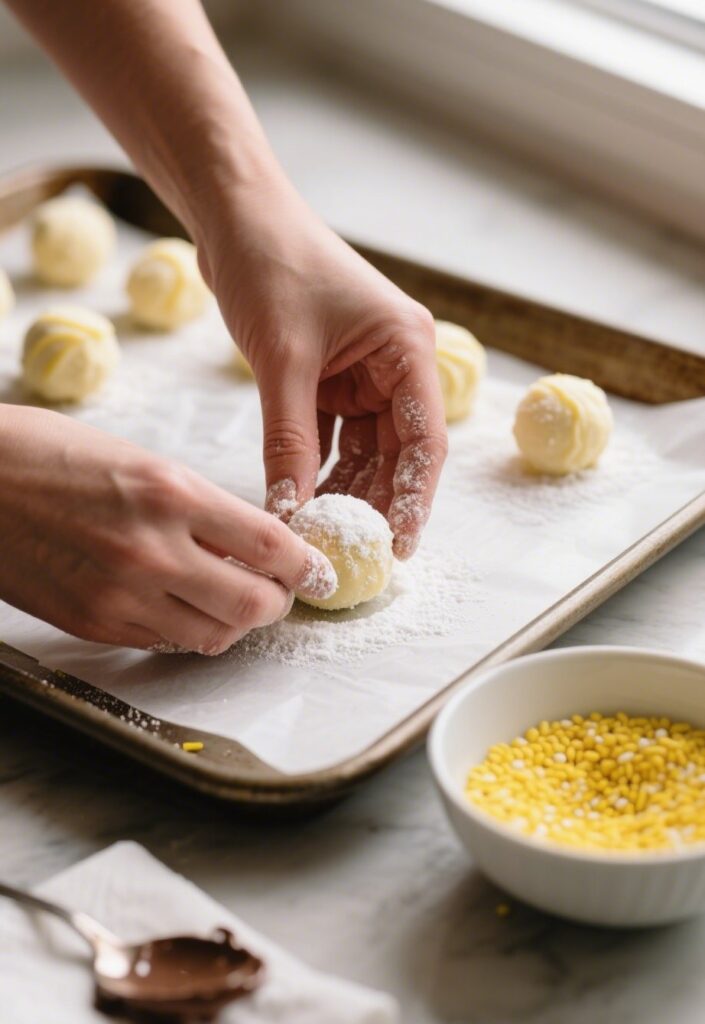
Tips for Smooth, Clean Shaping
Once your lemon ganache is fully chilled and firm, it’s time to roll them into delicious bite-sized truffles. But rolling truffles can get messy—unless you follow these tried-and-true tricks for neat, smooth shaping.
- Use a melon baller or teaspoon
Scoop out consistent portions of ganache using a melon baller or round teaspoon. Keeping your truffles uniform not only looks better but ensures even chilling and coating. - Chill your hands if needed
Your hands will warm up as you roll. If the ganache starts melting or sticking, rinse your hands with cold water, dry them, and continue. This keeps the ganache from softening too quickly. - Wipe your hands between each roll
This step is key! After forming each truffle, wipe your hands clean to remove chocolate residue. It may sound tedious, but it dramatically improves how smooth and polished each truffle looks. - Place directly on a lined baking sheet
As you finish each truffle, place it on a parchment- or silicone-lined baking sheet. Leave a little space between each one to avoid sticking.
Best Coatings for Flavor and Texture Contrast
The coating is what gives lemon truffles that finished touch—whether you want a traditional look or something fun and colorful. Here are a few standout options:
| Coating Type | Flavor Profile | Texture | Best For |
|---|---|---|---|
| Powdered sugar | Sweet, light | Soft | Classic smooth finish |
| Nonpareils | Neutral, crunchy | Crisp | Kids’ parties, visuals |
| Sanding sugar | Slightly sweet | Grainy | Sparkly, festive truffles |
| Crushed freeze-dried raspberry | Tart-sweet | Powdery-crunch | Gourmet flavors & contrast |
| Chopped nuts | Nutty, rich | Crunchy | More texture and variety |
How to coat your truffles:
- Drop each rolled truffle into your chosen coating.
- Gently roll or shake it around until fully covered.
- Place it back on the lined tray to finish.
Double Coating Tip: For extra flair, roll in powdered sugar first, chill for 15 minutes, then roll in sanding sugar for a sparkly two-tone effect.
Once coated, your truffles are ready to serve immediately or can be chilled again for storage.
Storage, Shelf Life & Serving Suggestions
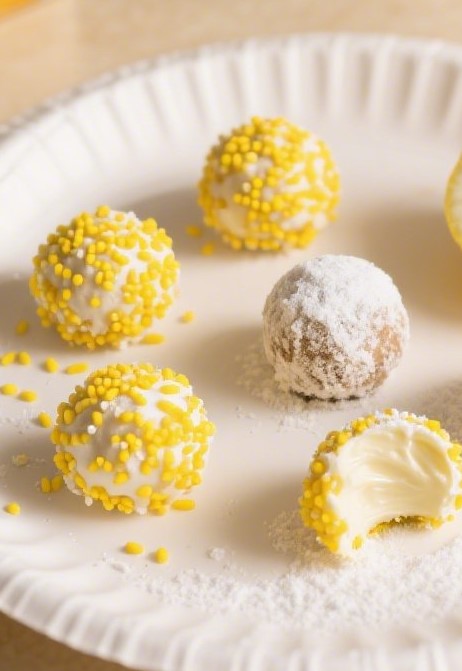
Fridge vs. Freezer Storage for Lemon Truffles
Once your lemon truffles are shaped and coated, storing them properly is the key to keeping them fresh, creamy, and delicious. Here’s how to store them for both short-term enjoyment and long-term keeping.
Refrigerator Storage (Best for up to 2 weeks):
Lemon truffles should always be stored in the refrigerator, especially if you’re using real cream and butter. Place them in an airtight container and separate layers with parchment paper to prevent sticking.
- Shelf life: Up to 2 weeks in the fridge
- Flavor & texture: Maintains smoothness and rich citrus flavor
- Tip: Bring truffles to room temperature 15 minutes before serving for the best texture and taste
Freezer Storage (For up to 3 months):
Want to make truffles ahead of time for parties or gifts? These freeze beautifully.
- Place them in a single layer on a baking sheet and freeze for 1 hour
- Transfer to a freezer-safe container or zip-top bag
- Label and date for easy tracking
To thaw: Move to the fridge overnight, then let sit at room temperature for 10–15 minutes before serving.
When and How to Serve for Best Flavor
Lemon truffles are super versatile and can elevate any event or casual afternoon treat. Here are a few ideal times to serve them:
| Occasion | Why Lemon Truffles Work |
|---|---|
| Afternoon tea | Light, zesty, not too heavy |
| Summer garden parties | Refreshing citrus flavor |
| Bridal or baby showers | Elegant look & easy to eat |
| Holiday dessert platters | Bright contrast to dark treats |
| Gift boxes | Homemade, impressive, easy to pack |
To make them look stunning on a platter or in a gift box, try:
- Garnishing with lemon zest curls
- Pairing with mint leaves or candied lemon peel
- Arranging with alternating colors (e.g., powdered sugar vs. yellow sprinkles)
Pro Presentation Tip: Stack them in mini cupcake liners or clear favor bags for party-ready appeal.
If you’re planning an event or holiday dessert table, don’t miss our Italian Lemon Spread Delight
Troubleshooting & Expert Tips
Why Your Ganache Might Not Set
Sometimes even the best ingredients and intentions lead to a ganache that’s too soft, runny, or oily. Here’s what might be going wrong—and how to fix it:
1. Using the wrong type of white chocolate
White chocolate chips or candy melts don’t contain enough cocoa butter to solidify the ganache properly. They’re formulated to hold shape during baking, not melt smoothly. Always go for high-quality white chocolate bars.
2. Overheating the cream
If your cream boils too long or too hard, it can throw off the liquid-to-fat ratio. It should only just begin to bubble, then be removed from heat immediately.
3. Over-stirring the ganache
Vigorous stirring introduces air or separates the fat. The fix? Stir slowly and only in one direction with a wooden spoon.
What to do if it’s already too soft:
- Chill it longer—overnight is ideal.
- If still soft the next day, gently fold in 1–2 tablespoons of powdered sugar and chill again.
- For emergencies, use it as a cake filling or spoon over ice cream (because nothing’s wasted in a dessert kitchen!).
Common Mistakes and How to Fix Them
Let’s break down a few other common truffle-making errors so you can avoid them from the jump.
| Mistake | Cause | Fix |
|---|---|---|
| Mixture looks oily or separated | Stirred too hard or added cream too fast | Stir slowly; let ingredients sit before mixing |
| Truffles won’t roll | Ganache too soft | Chill longer; use cooler hands |
| Truffles melt when rolling | Warm room or hands | Work in batches, keep ganache cold |
| Coating won’t stick | Truffle surface is too dry or warm | Roll gently while cold; press coating softly |
Expert Tip: Roll a few test truffles first. If they’re sticky, pop the ganache back in the fridge for 15–30 minutes and try again.
Variations and Add-Ons
How to Make Vegan Lemon Truffles
Want to enjoy these citrusy delights dairy-free? Easy. You can totally make vegan lemon truffles with a few thoughtful swaps—without sacrificing flavor or texture.
Here’s your vegan makeover:
| Ingredient | Swap With |
|---|---|
| White chocolate | Vegan white chocolate (like Enjoy Life or Pascha) |
| Heavy cream | Full-fat coconut cream (use only the thick part) |
| Butter | Plant-based butter or refined coconut oil |
| Coating options | Stick with sprinkles, powdered sugar, or crushed nuts—all vegan-friendly |
Bonus tip: Chill the coconut cream beforehand and scoop only the solid part to avoid watering down the ganache.
Adding Raspberry, Coconut, or Matcha Twists
Here’s where you can get creative and make your Lemon Truffles the talk of the party.
1. Raspberry Lemon Truffles
Add freeze-dried raspberry powder into the ganache before chilling (about 2 tablespoons). It boosts flavor and turns your truffles a gorgeous pink hue. Roll in more raspberry dust or white sanding sugar for a stunning look.
2. Lemon Coconut Truffles
After shaping, roll each truffle in finely shredded coconut (unsweetened works best for balance). You’ll get a tropical, nutty finish that complements the lemon beautifully.
3. Lemon Matcha Truffles
Whisk in ½ teaspoon of matcha powder with the cream while heating. It creates a citrusy-earthy blend and a soft green tone. Finish with a dusting of powdered sugar or a matcha-coconut coating.
| Flavor Variation | Add-In | Coating Suggestion |
|---|---|---|
| Raspberry Lemon | Freeze-dried raspberry powder | Raspberry dust + white sugar |
| Lemon Coconut | None needed | Fine coconut flakes |
| Matcha Lemon | Matcha powder | Matcha + powdered sugar mix |
These fun twists make your truffles more personalized and perfect for themed events or gourmet gifts.
Nutritional Breakdown and Dietary Info
Calorie and Fat Breakdown Per Truffle
If you’re wondering whether lemon truffles can fit into your sweet life without wrecking your goals—you’re in luck. While indulgent, these truffles are perfectly portioned.
Here’s the estimated nutrition per truffle (based on a batch of 24):
| Nutrient | Amount (per truffle) |
|---|---|
| Calories | 92 kcal |
| Total Fat | 6g |
| Saturated Fat | 4g |
| Carbohydrates | 8g |
| Sugar | 8g |
| Protein | 1g |
| Cholesterol | 10mg |
| Sodium | 14mg |
| Calcium | 30mg |
| Iron | 0.04mg |
| Vitamin A | 91 IU |
| Potassium | 43mg |
Note: These numbers can vary depending on brand of chocolate, cream type, and coating. Using vegan ingredients or low-sugar options will adjust the totals.
Looking for more desserts? Try this Easy Lemon Brownies Recipe
Can Lemon Truffles Fit Into a Healthy Diet?
Absolutely—moderation is key. These lemon truffles are made from real ingredients, no preservatives, and are much healthier than store-bought candies full of stabilizers.
Here’s why they can be part of a balanced lifestyle:
- Built-in portion control: Each truffle is a single, satisfying bite.
- No baking needed: No extra fats or oils required from crusts or batters.
- Customizable: Swap in low-fat or plant-based alternatives to lighten them up.
If you’re on a special diet, consider these adjustments:
- Keto: Use sugar-free white chocolate and heavy cream. Roll in crushed almonds instead of powdered sugar.
- Vegan: Swap ingredients as covered in Part 8.
- Gluten-Free: These are naturally gluten-free when using certified GF white chocolate.
FAQs:
How do you store homemade lemon truffles?
Store them in an airtight container in the refrigerator for up to 2 weeks. For longer storage, freeze in layers separated by parchment paper for up to 3 months.
What type of white chocolate works best in truffles?
Use high-quality white chocolate bars like Ghirardelli or Lindt. Avoid chips or candy melts—they don’t melt evenly or set correctly.
Can I use lemon juice instead of lemon extract?
No. Lemon juice has too much water and acidity, which can make the ganache seize or separate. Use pure lemon extract for best flavor and consistency.
Why is my truffle mixture too soft to roll?
Your ganache may need more chilling. Refrigerate for at least 6 hours, or overnight. If it’s still too soft, gently stir in powdered sugar to thicken.
Can I freeze lemon truffles?
Yes. Place them in a single layer to freeze, then transfer to a sealed container. Thaw in the fridge before serving.
Are lemon truffles gluten-free?
Yes! This recipe is naturally gluten-free as long as your white chocolate is certified GF.
The Djellaba as a Living Symbol of Moroccan Identity
In a world where fashion trends come and go, the Moroccan men’s djellaba endures — not just as a garment, but as a profound expression of identity, dignity, and belonging. It’s a cloak of memory, faith, and pride. Every fold, every stitch, every thread speaks of generations who wore it with intention — from rural farmers in the Rif mountains to city elders gathering for Friday prayer.
To wear a djellaba is to carry a story — one of tradition, resilience, and cultural pride. It’s a reminder that clothing can be far more than fabric. It can be a bridge between past and present, between homeland and diaspora, between personal style and shared heritage.
As global interest in Moroccan culture continues to grow, so too does the importance of preserving and honoring the true meaning behind traditional garments. Whether you wear the djellaba for a special occasion, a spiritual gathering, or simply to feel more connected to your roots, it serves as a timeless emblem of who you are and where you come from.


